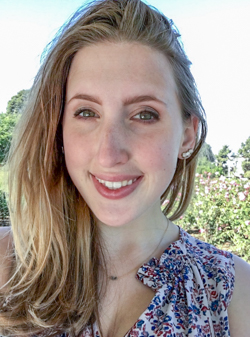
Alison Laurence is a Ph.D. Candidate in the Department of History, Anthropology, and Science, Technology and Society Massachusetts Institute of Technology. She is a 2016-2017 Consortium Research Fellow.
My dissertation, “An Unnatural History of Deep Time: Extinct Animal Encounters in the Modern United States,” examines the spaces in which American publics have come face-to-face with long-extinct creatures. My survey of extinct animal exhibitions stretches from the early twentieth century to the present, drawing out the relationships between geographically and temporally disparate displays through the contributions of common collaborators. Most of the exhibits I reconstruct were staged by and in natural history museums, though I also consider exhibits mounted by other sponsors, including oil companies and religious fundamentalists, in order to capture the narrative possibilities that these mute (and mutable) megafauna allow. Ultimately, my dissertation chronicles how diverse authors have compiled evidence from a hopelessly incomplete and imprecise, yet expansive, material archive (i.e. the geological record) to tell a persuasive story about the past that serves that present.
I bring an ecological perspective to my analysis of these exhibits, arguing that the spatial relationships among specimens have been fundamental to the messages they conveyed about the earth’s past and to the public’s experience of deep time. Take for example the Depression-Era Hall of Extinct Monsters at the Smithsonian’s National Museum of Natural History. Photographs from that era reveal a rearticulated Basilosaurus steps away from the Mastodon, Megaloceros, and Triceratops mounts. Here Mesozoic and Cenozoic specimens intermingled in a museum environment that prioritized comparative anatomy over a temporal narrative of life on earth. Did museumgoers understand that this was an anachronistic assemblage? Does it matter? The Hall of Extinct Monsters represents just one way to tell a story using extinct animals. My “unnatural history” brings together narratives from a variety of communities that have, through their exhibits, claimed authorship over deep time—or, in the case of Young Earth Creationists, rejected the concept entirely while capitalizing on its charismatic megafauna.
This research builds on history of science, museum studies, and STS literatures that unpack the histories and politics of natural history museum habitat dioramas. As numerous scholars have demonstrated, the scientists and technicians who collaborated on these displays in the early decades of the twentieth century were aiming to engineer nature untrammeled, but instead they mapped their own ideas about gender, race, and geopolitics onto their taxidermic tableaus. My dissertation builds on that premise, while shifting the inquiry from extant to extinct animal exhibits.
The generous research fellowship from the Consortium allowed me to visit the archives of three natural history museums that I will feature in my dissertation. At the archives of the Academy of Natural Sciences in Philadelphia, which are overseen by Drexel University, I spent time in the papers of Benjamin Waterhouse Hawkins. Hawkins was the British naturalist and artist who together with Richard Owen created the world’s first exhibit of Mesozoic models—or, as they were then called, antediluvians—which debuted in 1854 in the Crystal Palace Park at Sydenham. In the 1860s, he travelled to the United States with plans to install a similar exhibit in New York’s Central Park. Though local politics would ultimately prevent Hawkins from opening this Paleozoic Museum, his plans and illustrations indicate how he intended to assemble his models of extinct megafauna. He also travelled to Philadelphia where he mounted a Hadrosaurus foulkii for the Academy’s museum. Unlike the Crystal Palace dinosaurs, which were simply cement models, the hadrosaur mount featured (some) fossilized bones. The exhibits that Hawkins imagined and created constitute a sort of proto-history to my story, which begins around 1900 when museums began opening their fossil halls. His papers allow me to understand the template that he established and will be the jumping off point for my “unnatural history.”
At Yale University I visited the Peabody Museum of Natural History’s Vertebrate Paleontology Archives. I am particularly grateful to Daniel Brinkman for helping me locate correspondence between paleontologist John Ostrom and sculptor (and former habitat diorama artisan) Louis Paul Jonas who created massive fiberglass dinosaurs for Sinclair Oil Corporation’s promotional Dinoland exhibit at the 1964-65 New York World’s Fair. Connections like this transform what may seem, initially, to be a case study approach into a more cohesive narrative.
At the Smithsonian I benefited from access to two separate archival centers. At the Smithsonian Institution Archives I pulled the records of the National Museum of Natural History’s Vertebrate Paleontology department to reconstruct the aforementioned Hall of Extinct Monsters along with its earlier and later iterations. I also visited the Archives Center at the National Museum of American History, which maintains the papers of the Messmore & Damon Company, a business known for creating innovative mechanical animal models. Because I’ve become accustomed to the types of material stored in natural history museum archives—exhibit catalogs, renovation debates, and photographs of exhibit halls (that are, too often, undated)—the Messmore & Damon records were an exciting departure. There I found a patent for a mechanical Brontosaurus that was featured in a Depression-Era revue called The World A Million Years Ago. Performing alongside a chorus line dressed as cavewomen, this sauropod would nightly catch a chorus girl and lift her flailing above the crowd. Though certainly more sensational than the contemporaneous Hall of Extinct Monsters at the Smithsonian, the Messmore and Damon revue similarly collapsed geological time.
I am grateful to the Consortium for supporting this multi-sited research, which will allow me to tell the nuanced and historically-situated stories of extinct animal encounters in the modern United States.